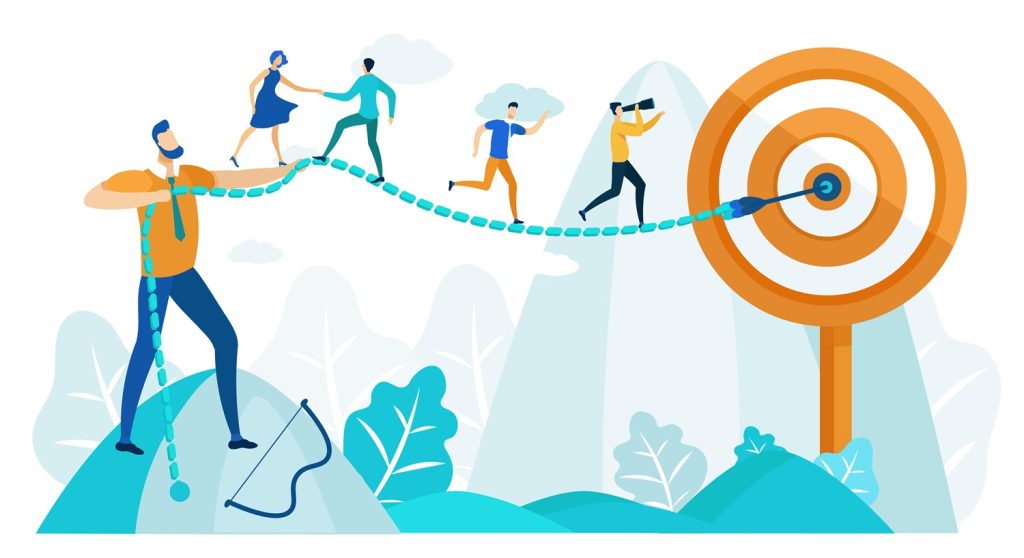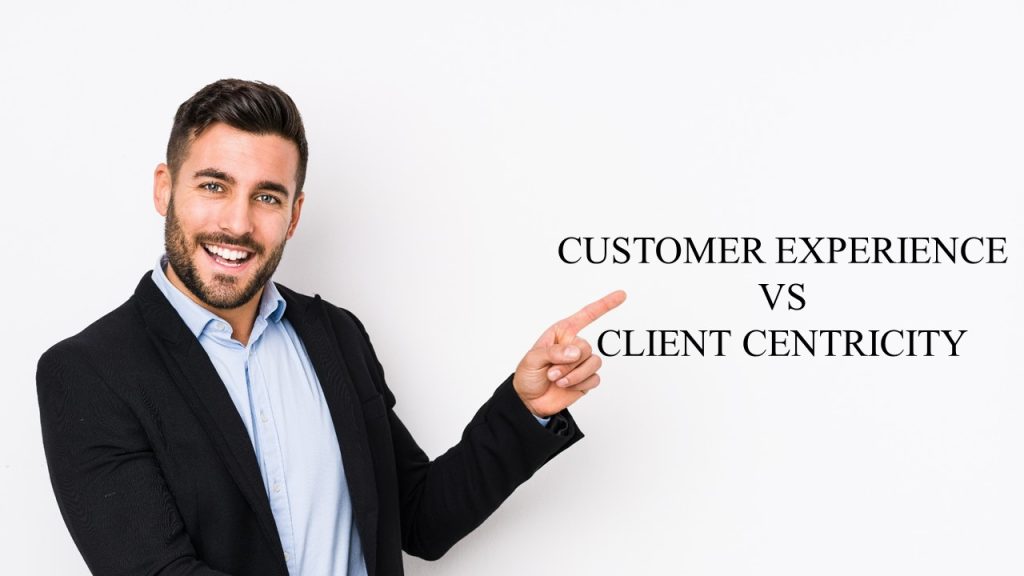
Integrity plays a crucial role in client-centric business growth. When a business operates with honesty and strong moral principles, it builds a foundation of trust with its clients. Clients who trust a business are more likely to remain loyal, provide repeat business, and refer others, driving sustainable growth. Integrity ensures that the business consistently delivers on its promises, maintains transparency, and treats clients with respect. This not only enhances the company’s reputation but also creates a positive and ethical work environment, ultimately leading to long-term success and profitability.
#nilakantasrinivasan-j #canopus-business-management-group #B2B-client-centric-growth

A winning mindset in business growth revolves around prioritizing the needs and satisfaction of clients. This mindset encourages continuous improvement, adaptability, and a proactive approach to solving client challenges. With this mindset, embrace challenges and find ways to address them proactively. Ultimately, a winning mindset aligns your business success with the client success, driving mutual growth and long-term partnerships.
#nilakantasrinivasan-j #canopus-business-management-group #B2B-client-centric-growth

Prioritizing the client’s needs ensures that every interaction is meaningful and impactful. By deeply understanding their preferences and challenges, businesses can tailor their services to create unparalleled experiences. This is truly the spirit of client-centric approach that fosters loyalty and trust. In a world where choice is abundant, being genuinely client-focused sets a company apart, making every engagement significant and memorable.
#nilakantasrinivasan-j #canopus-business-management-group #B2B-client-centric-growth

In the realm of handling clients in #B2B businesses like #manufacturing, #Industrial, #IT, #ITES, Tech, Telecom & other services, a vital lesson emerges from the transient nature of all things like deliveries, orders, escalations, daily interactions and heated moments. This “Client Centricity: Transient lesson” underscores the importance of cherishing prosperous moments and relishing them to the utmost with your colleagues and your clients. A true #clientcentric journey in B2B is about making it a practice to commemorate the small successes of your organization and your clients’ (though you may not be part of it). Simultaneously, during the challenging phases, it’s crucial to remind yourself that difficulties are not perpetual. Just as clouds eventually yield to the sun’s radiance, adversities too shall pass. But at the end of it, your relationship with your client will be stronger. So nurture patience and maintain faith in the process, knowing that brighter days are on the horizon.
#nilakantasrinivasan-j #canopus-business-management-group #B2B-client-centric-growth
Every employee should embrace the following 7 acts of client centric professional. This will help in delivering superior client service and meeting company goals

1. Understand Clients with Empathy
Understanding clients with empathy is the first act of client centric professional and is important for the growth of any organization because it helps to build strong and lasting relationships with them. When you understand and empathize with your clients, you are able to respond to their needs, wants and concerns in a meaningful and personal way. This helps to establish trust and creates a sense of loyalty, which is crucial for maintaining and growing your client base.
2. Take Ownership for their needs
Taking ownership of a customer’s needs is the 2nd act of a client centric professional because it demonstrates a commitment to providing exceptional customer service. By taking ownership of a customer’s needs, the professional is signaling that they are invested in resolving the customer’s problem or meeting their requirements. This helps to build trust and confidence with the customer and can lead to improved customer satisfaction and loyalty.
3. Establish Agile, Fair, Scalable, Transparent and Sustainable Processes
Processes play a critical role in becoming client-centric because they help organizations to understand, manage and deliver value to their clients. . By streamlining operations, mapping the customer journey, implementing feedback mechanisms, and supporting continuous improvement, companies can build a culture that is focused on meeting the needs of their clients.
4. Collaborate internally & externally
Collaboration internally & externally plays a critical role in improving client centricity by enabling organizations to align their efforts towards meeting the needs and expectations of their clients. By working together, organizations can develop a more comprehensive understanding of their clients, provide more effective and personalized solutions, and continuously improve their client-centric approach.
5. Consistently deliver on promises
Consistently delivering on promises is critical in client centricity because it builds trust, demonstrates reliability, increases satisfaction, enhances reputation, and mitigates risk.
6. Continuously improve things for the clients
Continuously improving things for clients requires a commitment to ongoing learning, flexibility, and adaptability in the face of challenges and uncertainty. It may require businesses to invest in resources, such as staff, technology, or data, to support their improvement efforts.
7. Serve with passion
Serving with passion means that an individual is deeply committed to delivering high-quality service and meeting the needs of their customers. This attitude is a critical component of being client-centric, which means that an individual is focused on understanding and meeting the needs of their clients.
We conduct interactive “7 Acts of Customer Centric Professional” workshop in Chennai, Bangalore, Mumbai, Delhi and across India. To know more about the workshop, visit our page
#nilakantasrinivasan-j #canopus-business-management-group #B2B-client-centric-growth
Unlocking authentic communication beyond the hidden pitfalls of corporate buzz words

In the bustling world of B2B organizations, communication is key. The ability to convey ideas clearly and effectively can make or break a business deal. However, sometimes, in the quest for efficiency and professionalism, corporate phrases creep into our everyday language. Clients use them, and internally, our leaders also use them often. I’m referring to phrases like “analysis-paralysis,” “boil the ocean,”, etc. Some of us develop such fondness for such phrases that not a day passes without using them!
While they may sound impressive, these phrases can often obscure the real issues, hinder growth, and compromise client-centricity. Many times, these phrases become part of the persuasion tactics loaded with hidden agendas.
Ultimately, leaders have to earn the trust of their team and their clients. In turn, clients have to earn the trust of their supplier partners. That is B2B.
What is the implied meaning of such phrases when used by your clients and by our leaders? That is what you will read below.
I want to make it clear that there is nothing wrong with using these phrases. In fact, I too use many of them. When used often, it is a sign of personal bias, something that all of us have to watch out for.
I have a dozen such phrases for you here and 7th is my favorite because I hear it all the time.
“Analysis – Paralysis” – Excessive Delays
The phrase “analysis-paralysis” can be used to criticize excessive analysis or decision-making delays, but it may oversimplify the need for thorough consideration in complex situations. It can also be used to control the direction of progress if it is unfavorable or if the outcome may be unpleasant. In essence, this can be used to identify the real problems of the clients or business.
“Dive deep” – The Analysis Abyss
The exact opposite of “Analysis – Paralysis”, leaders want you to continue the analysis because you haven’t reported what they wanted. When taken at its face value, “Dive deep” may encourage excessive micromanagement or deeper analysis. But all it means is that leaders are not yet ready to act based on your report.
“Let’s look at the Big Picture” – Avoiding Immediate Concerns
The phrase “big picture” is often used to encourage long-term thinking, which is important. However, it can be a convenient way to avoid addressing pressing issues. Focusing too much on distant goals can cause us to overlook immediate concerns, leaving clients dissatisfied.
“Boil the Ocean” – The Perceived Folly
The exact opposite of “Let’s look at the big picture”, labeling a project as attempting to “boil the ocean” implies that it’s too ambitious to succeed. In reality, in most cases, it is meant to keep the team from exploring an area that the leader is not comfortable with. While caution is necessary, innovation sometimes requires big leaps.
“Let’s take this offline” – The Evasion Tactic
Moving discussions “offline” might seem like a way to streamline meetings, but it can also be a tactic to avoid transparency or accountability. In most cases, such offline discussions never happen, so the item is completely ignored. Important conversations should be had openly to ensure everyone is on the same page.
“I’m listening” – The Facade of Engagement
Saying “I’m listening” can be a hollow gesture when not followed by genuine understanding and action. Actually, this is an oxymoron. It is also used as a tactic to say, I’m not going to act on this, though I know it. If used in front of the client, this can be harmful to the relationship. Active listening is vital in a client-centric approach, and mere lip service can harm relationships.
“Want it as of yesterday” – Rushing to Mediocrity or No Planning
Urgency is important, but pushing for immediate results can lead to rushed, subpar work. In my personal experience, every time a client or prospect says this, clearly they don’t have any plan at all, whatsoever. Quality should never be sacrificed for speed, especially in a client-centric model.
“Give 110%” – The Culture of Overwork
Though often misunderstood as striving for excellence, leaders use this to convey that they are not happy with your progress. But often employees misunderstand and end up overworked and burned out. It’s crucial to have and set realistic expectations.
“Low Hanging Fruit” – Oversimplifying Challenges
While tackling easy tasks first can be efficient, referring to them as “low-hanging fruit” may downplay the complexity of a project. This phrase is often used by leaders to push a big-ticket item and get it done quickly in their eagerness to see quick results. But it can lead to a higher failure rate and botched execution due to a lack of comprehensiveness and preparation. Clients may start to perceive your organization as making false promises.
“Thinking outside the box” – The Illusion of Innovation
When someone tells you to “think outside the box,” they might be inadvertently stifling creativity. This phrase can pressure employees into unrealistic levels of innovation, pushing them towards ideas that may not be practical or beneficial for the client.
“At the end of the day” – Oversimplifying Complexity
While “at the end of the day” summarizes key points, it can also oversimplify complex issues, potentially neglecting crucial client concerns. It is smart way to neglect everything that is not convenient and stick to what one thinks needs to be done.
“Take the lead” – Pushing Premature Leadership
It is another smart way to nudge the decision making process. Leaders either use this shoo-away responsibility by proactively asking someone else to take the lead or keep it within their fold by encouraging one of their guys to take the lead. It’s a hint that the boss wants this to be done our way! On a serious note, encouraging someone to “take the lead” can be beneficial, but it may also pressure individuals into roles or responsibilities they are not ready for.
In the world of B2B organizations, clear and transparent communication is paramount. Corporate phrases, although well-intentioned, can often hinder collaboration, morale, growth, and client-centricity. To truly serve clients and foster growth, leaders must strike a balance between professionalism and authenticity. And finally, remember, it’s not just about what you say, but how you say it.
Evaluate Client Centricity of your team
An organizational assessment to understand the behavioral and cultural maturity of an organization across 8 dimensions using 4 maturity levels. Unlike traditional assessments, in this survey, participants are given a few random scenarios and have to select what they will do or feel in each of them.
If you are interested to know more, you can also contact us
#nilakantasrinivasan-j #canopus-business-management-group #B2B-client-centric-growth
Role of Facilitation in Client Centric Business Growth

Recently, the Managing Director of a large tech firm in India invited me to their annual strategy session to be an observer.
One of the items on the agenda involved addressing some of the key challenges faced by clients and partners. There were 4 challenges identified, and two of the P&L business leaders were tasked with facilitating two separate but concurrent group discussions on these. Both of them were seasoned industry professionals with 20+ years of experience. For the task at hand, each of them had to facilitate a group of 20+ people, dwell on 2 organizational challenges, brainstorm, and come up with some ideas to overcome them. As they were already running late, the MD gave both teams an hour for a break-out session, after which each leader had to report out. I split my time between both teams and observed the proceedings.
One of the groups started off well but soon went all over the place. They debated a lot on various related issues, daily challenges, client behavior, industry trends, etc., and spent nearly 45 mins on the first topic alone. Realizing this and in exhaustion, they swiftly covered the second topic. The team requested more time and was granted it because even the second team was running late! The leader, on his part, allowed the team to contribute as he was amiable. He noted down all their points on the white board. At times, the team went on tangents, resulting in a few parallel discussions.
While the first team lacked direction and guidance, the second team lacked enthusiasm. Hardly anyone was contributing. Some of them in the group were known to me, so I can say it was unusual. Their white board was nearly empty, except for two or three points. The leader was certainly in command, and he was moving from one person to another, asking them for their points. I got curious because there’s nothing on the board, but people are giving a lot of points. Clearly, something was wrong.
What I found was that the leader would scrutinize each point while involving others in the group, then immediately conclude that there was an issue of adherence, behavior, training, process, etc., thereby instantly providing a resolution. As time passed, hardly anyone opened up. It turned into a pseudo-review. At one point, he realized there was nothing on the board, so he loosened up a bit, but there was no improvement, for everyone had tread safely. Why would anyone take chances with an alpha leader?
I was bewildered. What was meant to engage the team and come up with acceptable solutions turned out to be festered. Later on, the MD expressed his displeasure to his leaders.
Why is Facilitation 360-degree Skill?
Whether you are a fledgling leader or an incumbent, regardless of your level, domain, or sector, facilitation skills are absolutely vital. It impacts many aspects of strategic and daily management. It is needed in situations involving clients and internal colleagues. That is why I consider it a 360-degree skill. Here are a few of those situations where you will need it the most:
- Regular Meetings and Discussions
- Conflict resolution between teams and with clients
- Tough call decisions
- Project planning and strategic planning
- Change Management
- Solution Design
- Whiteboard discussions
- Problem-Solving Sessions
- Crisis Management
- Innovation and Ideation
- Customer feedback and focus groups
- Cross-Functional Collaboration
- Onboarding and orientation of clients and employees
- Retreats and team-building events
- Training and workshops
Imagine a day at work without at least one of these activities. So, literally, you wear the hat of a facilitator every single day.
Role of Facilitation in Client Centric Business Growth
Facilitation skills of the business development team, program managers, account managers, delivery heads, and HODs will enhance client interactions, foster better understanding, and promote client-focused decision-making. This, in turn, can lead to increased client satisfaction and intimacy, loyalty, better client engagement, solid relationships, and business growth such as revenue or profitability increment.
But remember, facilitation is not about dominance, dictatorship, or authoritarian leadership. Nor is it monologues or presentations. It’s also not about avoiding or suppressing conflicts within a group—needless to mention, ignoring group dynamics.
My 5 Simple Tips to Become a Good Facilitator
Here are my 5 simple tips for becoming a good facilitator:
- Actively listen to what others are saying without interrupting or forming judgments. Pay attention to both the words and the emotions behind them.
- Remain neutral and refrain from expressing your personal opinions or biases.
- Use open-ended questions to encourage discussion and exploration of ideas.
- Be attuned to the dynamics within the group. Address conflicts constructively.
- Use a structured approach to guide discussions. Use techniques like summarizing key points, capturing action items, and managing time effectively.
If you are interested in learning more about facilitation frameworks, you can check out the following: (Just google)
- The P.A.U.S.E. Model, developed by Richard Beach, emphasizes the importance of patience, attention, understanding, support, and empathy in the facilitation process. It is particularly useful in conflict resolution and addressing sensitive issues.
- The Agile Retrospective Framework, which is widely used in Agile development, is about allowing teams to reflect on their performance and identify opportunities for improvement.
If you are interested to know more, you can also contact us
#nilakantasrinivasan-j #canopus-business-management-group #B2B-client-centric-growth

Customer experience (CX) and client centricity are related concepts, but they are not the same thing.
Customer experience (CX) refers to the overall perception that a customer has of a company, based on their interactions with it. It includes all touchpoints, such as the website, customer service, and in-store experience, and it covers the entire customer journey, from awareness to post-purchase. CX is a holistic approach to understand, design and measure the customer journey, and make improvements that increase customer satisfaction and loyalty.
Client centricity, on the other hand, is a business strategy that prioritizes the needs and preferences of the customer. It is a way of thinking and acting that puts the client’s needs at the center of all business decisions. It is about understanding the customer’s needs and tailoring products, services, and interactions to meet those needs. It is a way of creating value for the customer, and it is a long-term approach to build trust and loyalty.
In summary, CX is focused on measuring and improving the customer’s overall perception of the company, while client centricity is focused on understanding and addressing the specific needs of individual customers. Both concepts are important, but they have different focuses and goals. A company that wants to provide a great customer experience should also have a client centric mindset.
Free Download
Download your copy of a research report on B2B customer experience practices in India.
Our research is to understand the best practices amongst the enterprises across various sectors in Indian region when it comes to Customer Experience Transformation. Customer Experience as a concept is generally not given the required attention is B2B sector. With increase in the competition in the market, customer experience is one of the major thing which defines the performance of the organization.

Example 1
A company that sells high-end kitchen appliances. This company has a customer experience strategy in place that focuses on creating a seamless and enjoyable shopping experience for customers. They have a user-friendly website, a knowledgeable customer service team, and a well-designed showroom. Customers are greeted warmly upon entering the store, and the sales associates are trained to ask the right questions and guide customers through the purchasing process. Overall, the customer experience at this company is positive and customers feel well-informed and satisfied with their purchase.
The same company also has a client centric approach. They conduct market research and segment their customer base, understanding the different needs and preferences of their target market. This allows them to tailor their products, services, and interactions to the specific needs of different customer segments. For example, they offer a wide range of products for professional chefs, as well as for home cooks, and they have different sales associates to help customers from different segments. They also conduct surveys and collect feedback from customers, to understand their specific needs and preferences and make adjustments to their products and services accordingly.
In this example, the company’s customer experience strategy focuses on creating a positive overall perception of the company, while their client centric approach focuses on understanding and addressing the specific needs of individual customers. Both strategies work together to create a positive shopping experience and increase customer satisfaction and loyalty.
Example 2
A company that sells enterprise software to help with supply chain management. They’ve got a customer experience strategy that makes sure buying from them is a breeze. They’ve got a website that’s easy to navigate, a sales team that’s quick to respond, and an onboarding process that’s as smooth as butter. As a result, their clients are happy with their purchase experience.
But this company doesn’t just stop there, they also have a client-centric approach. They take the time to understand their clients and their specific needs. They research their clients, segment them and tailor their software, services and interactions to specific client segments. For example, they might have different software packages for different industries, and different sales teams to help different client segments. They also ask for feedback and use it to improve their software and services.
In this example, this company’s customer experience strategy is all about making sure their clients have a good overall experience with the company, while their client-centric approach is all about understanding and addressing the specific needs of individual clients. Both strategies work together to create a positive purchasing experience and keep their clients happy.
#nilakantasrinivasan-j #canopus-business-management-group #B2B-client-centric-growth #customer-experience #client-centricity

Client centric strategies play a crucial role in a go-to-market (GTM) strategy, as they help to ensure that the products or services being offered meet the needs and preferences of the target customers. A client-centric approach to GTM focuses on understanding and addressing the unique needs of different segments of customers, rather than treating all customers the same.
Here are a few ways in which a client-centric strategy can be incorporated into a GTM plan:
- Segmentation: Segmenting your target market based on characteristics such as demographics, behavior, and needs can help you to tailor your products and services to specific customer segments. This can result in more effective and efficient marketing efforts.
- Personalization: Personalizing your marketing and sales efforts based on the unique needs and preferences of individual customers can help to build stronger relationships and increase customer loyalty.
- Feedback: Incorporating feedback from customers into your GTM strategy can help you to identify areas for improvement and adapt your approach as needed.
- Empathy: Putting yourself in the customer’s shoes and trying to understand their needs, pain points and preferences can help you to create products and services that better meet their needs.
- Continuous improvement: Continuously monitoring and analyzing customer feedback and market trends to make adjustments to your GTM strategy as needed.
By taking a client-centric approach to GTM, companies can improve their chances of success by creating products and services that are more closely aligned with the needs and preferences of their target customers. This can lead to increased customer loyalty, higher sales, and better overall business performance.
Free Download
Download free XL based touchpoint assessment check sheet for evaluation & benchmarking with instructions
This is an XL based check sheet with two different scenarios – (1) To assess various touchpoints across customer journey and (2) To benchmark touchpoints against competition for similar journey steps.

#nilakantasrinivasan-j #canopus-business-management-group #B2B-client-centric-growth #client-centric-strategy

Client centricity plays a crucial role in improving EBITDA for B2B companies. When a company is client-centric, it focuses on understanding and meeting the needs of its customers. This can lead to a number of benefits that can help to improve EBITDA.
Knowing the Client needs : Firstly, by understanding the needs of its customers, a company can create products and services that are tailored to meet those needs. This can lead to increased sales and higher profit margins. Additionally, a company that is client-centric is better able to identify and address any pain points that its customers are experiencing, which can lead to improved customer satisfaction and loyalty.
Communicate & Collaborate : Secondly, when a company is client-centric, it can lead to better communication and collaboration with its customers. This can help to build strong relationships, which can lead to repeat business and positive word-of-mouth recommendations. This can lead to increased sales and improved profit margins.
Agile Mindset : Lastly, when a company is client-centric, it is better able to anticipate and adapt to changes in the market. This can include changes in customer needs, competitor activity, and industry trends. By being able to anticipate and adapt to these changes, a company can be more agile and better positioned to capitalize on new opportunities.
In summary, client centricity plays a vital role in improving EBITDA for B2B companies. It enables companies to create products and services that meet customer needs, build strong relationships, and anticipate and adapt to changes in the market. All of these factors can lead to increased sales, improved profit margins, and overall growth for the company.
#nilakantasrinivasan-j #canopus-business-management-group #B2B-client-centric-growth #OKR
Sign-up for collaborat newsletter
